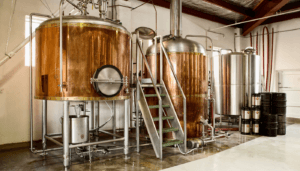For breweries and wineries, Cash flow is a top concern today. Cash flow forecasts can help you predict potential shortfalls and proactively address working capital gaps. They can also help avoid late payments, identify late-paying customers and find alternative sources of funding when cash is tight.
Best Practices for Positive Cash Flow
1. Identify peak needs
Many breweries and wineries are cyclical, and their cash flow needs may vary by month or season. Trouble can arise when an annual budget doesn’t reflect this, for example, three months of peak production in the summer to fill holiday orders followed by a return to normal production in the fall. Using a one-size-fits-all approach can throw budgets off, sometimes dramatically. It’s critical to identify peak sales and production times, forecast your cash flow needs and plan accordingly.
2. Account for everything
Effective cash flow management requires anticipating and capturing every expense and incoming payment, as well as — to the greatest extent possible — the exact timing of each payable and receivable. But pinpointing exact costs and expenditures for every day of the week can be challenging. Companies can face an array of additional costs, overruns and payment delays. Although inventorying all possible expenses can be a tedious and time-consuming exercise, it can help avoid problems down the road.
3. Seek sources of contingency funding
As your business expands or contracts, a dedicated line of credit with a bank can help meet your cash flow needs, including any periodic cash shortages. Interest rates on these credit lines can be comparatively high compared to other types of loans. So, lines of credit typically are used to cover only short-term operational costs, such as payroll and supplies. They also may require significant collateral and personal guarantees from the company’s owners. Small or new breweries and wineries might look into equipment financing or SBA Loans instead of credit lines.
4. Inventory Management
For breweries and wineries, inventory management is crucial. Many have multiple brands and SKUs to manage, plus inventory on raw materials and packaging. One helpful tool to keep track of your inventory’s impact on cash flow is Inventory Days on Hand (DOH). DOH can be calculated by dividing your average daily cost of sales into your inventory balance. This number will tell you how much of your cash is resting in your inventory and for wineries and certain types of beer this can be extra crucial due to the long turnover resulting from the aging process.
Another key to inventory is understanding the cost that goes into making the finished good. Without proper tracking of the ingredients and expenses to make the finished good, it will be hard to effectively manage cash and run your business properly. Knowing true profit margins on products will help you be able to make key business decisions.
5. Identify potential cash flow obstacles
For most companies, one of the biggest cash flow obstacles is slow collections from customers. Your business should invoice customers in a timely manner and offer easy, convenient ways for customers to pay (such as online bill pay). For new customers, it’s important to perform a thorough credit check to avoid delayed payments and write-offs.
Another common obstacle is poor resource management. Non repeatable processes, misguided investments and improper use of space are just a few examples of poorly managed expenses and overhead that can negatively affect cash flow.
6. Adjusting as you grow and adapt
Your company’s cash flow needs today likely aren’t what they were three years ago — or even six months ago. And they’ll probably change as you continue to adjust to the new normal. That’s why it’s important to make cash flow forecasts an integral part of your overall business planning
Still Looking for More Support?
Get in touch with our audit and assurance team to start discussing how we can support your brewery or winery’s cash flow.









